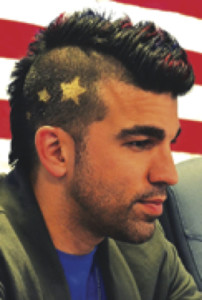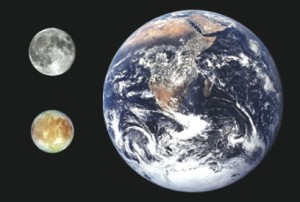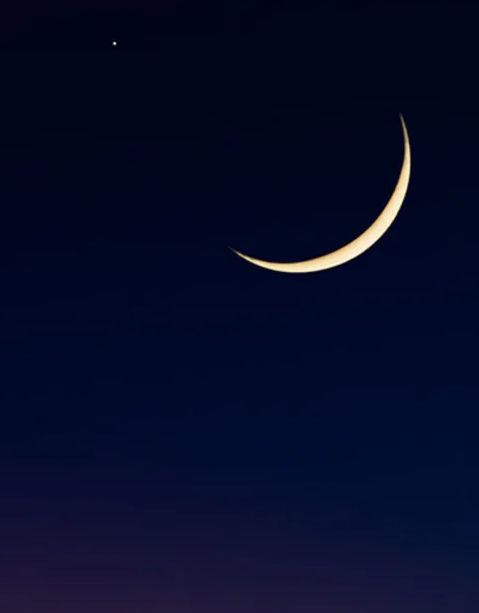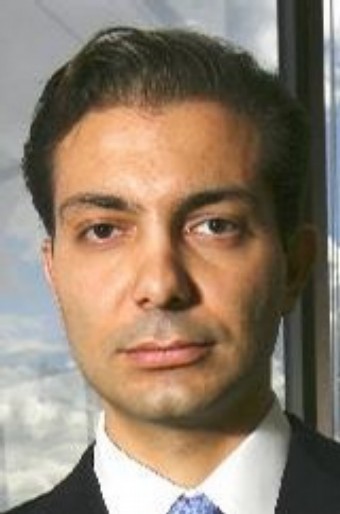 Remember the “Mohawk Guy”? That was Iranian-American Bobak Fer-dowsi, who wowed the television audience when he was seen working in the control room as NASA landed its rover vehicle, Curiosity, on Mars in August 2012.
Remember the “Mohawk Guy”? That was Iranian-American Bobak Fer-dowsi, who wowed the television audience when he was seen working in the control room as NASA landed its rover vehicle, Curiosity, on Mars in August 2012.
Ferdowsi has now been promoted to become one of the planners for a scheduled mission to explore Europa, one of Jupiter’s moons and the closest object thought capable of supporting life.
The Europa Clipper is planned for launch in the 2020s and will take at least 2 1/2 years to reach Europa.
In an interview with Space.com, Ferdowsi said, “We believe Europa’s crust has a large, salty ocean underneath. It has the ingredients for life – water, warmth and chemicals from the core—like we see on Earth. We think Europa’s ocean has probably persisted for a long enough time for life to arise.”
Ferdowsi explained that the Europa Clipper, as the first visitor to that body, will not land and drive about.

“We envision a mission consisting of a series of flybys, in which a spacecraft will swoop by the planet for a couple hours at a time, in a highly elliptical orbit lasting roughly two weeks. Jupiter has a strong magnetic field whose radiation could wreak havoc on electronics if it spent more time near the planet. The spacecraft would slowly move its orbit around in order to capture Europa from all sides. The flybys would be reconnaissance for a future mission when we might land on this moon.”
The Curiosity Mars lander was the first project he worked on in the space program “I joined as a mission planner not too long after it went from the study phase to the mission phase. Finally, after about 10 years on the project, the spacecraft was about to land on Mars.”
He spoke about the “seven minutes of terror”—the seven minutes when the Mars lander is in the Martian atmosphere before the landing and unable to communicate with earth.
“Once you’re hitting the top of the atmosphere, in those seven minutes, the spacecraft is entirely on its own,” Ferdowsi said. “The landing itself was a really weird sort of stress, because of the light delay between Mars and Earth [Mars is 14 minutes away]. Even when you’re just about to start this crazy landing, it’s already been done for seven minutes. Whatever the result is, it’s over. And so many things were one-time-only: The parachute had to deploy, incendiary bolts called pyros had to fire and cut away parts of the spacecraft, the sky crane had to lower us to the ground.”
He talked about the hairdo that made him an overnight sensation when the television cameras picked it up. “My hair was a tradition for the big efforts during the mission. For system tests, I started shaving the number of the test on the side of my head. For launch day, I did a very brightly colored haircut that looked like a rocket flame, fading from red to gold. I think the team knew I was going to do something for the landing. My boss sent out an email asking what my hair should look like, for example, Mars red; red, white and blue; even a reverse Mohawk—which I definitely did not want to do. The favorite was red, white and blue.”
That made him an instant celebrity. “Nobody gets into engineering or science thinking, ‘I’m going to be famous.’ But I think the nerd stereotype is changing,” Ferdowsi said.
“I grew up wanting to be a part of the space programÖ. The best part for me is getting to talk to high school kids who are interested in NASA about how much fun it is when that many people come together with a singular focus, to build a roving science laboratory on Mars. NASA may be American, but the effort was very international. Landing on Mars felt like a very human moment to me.”
Ferdowsi’s dad came to the United States to go to college, got married and stayed. Ferdowsi was born in Philadelphia three days after the US embassy in Tehran was seized.
His instant fame in 2012 produced a large number of proposals of marriage. But, at age 35, he remains single.
























